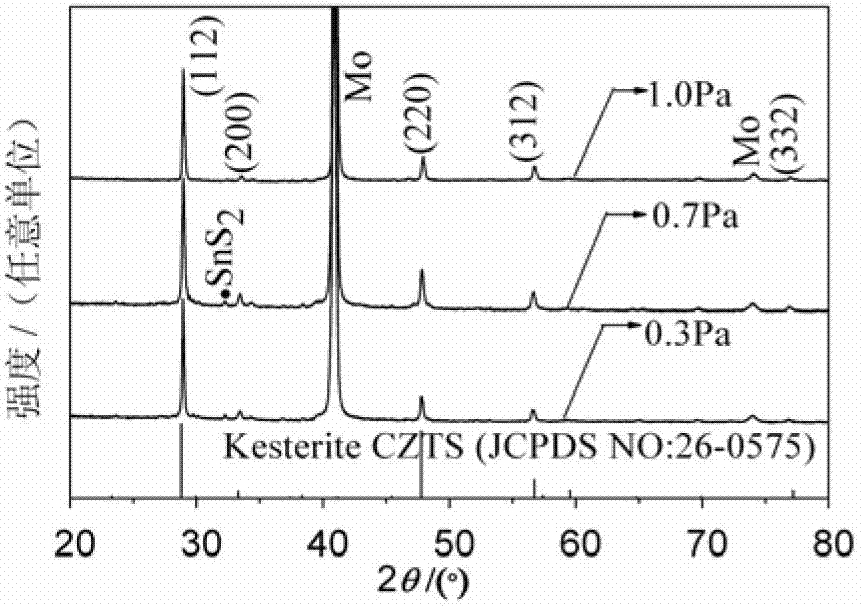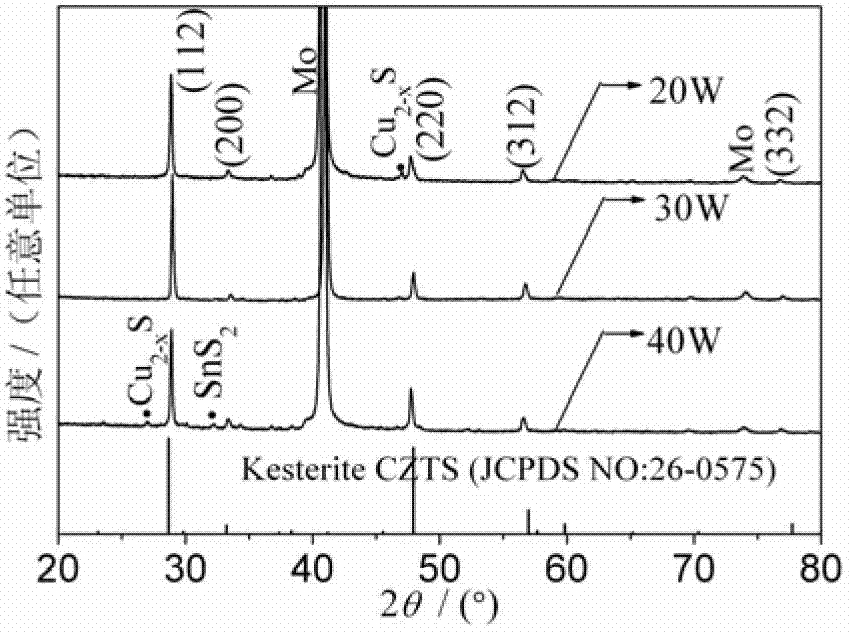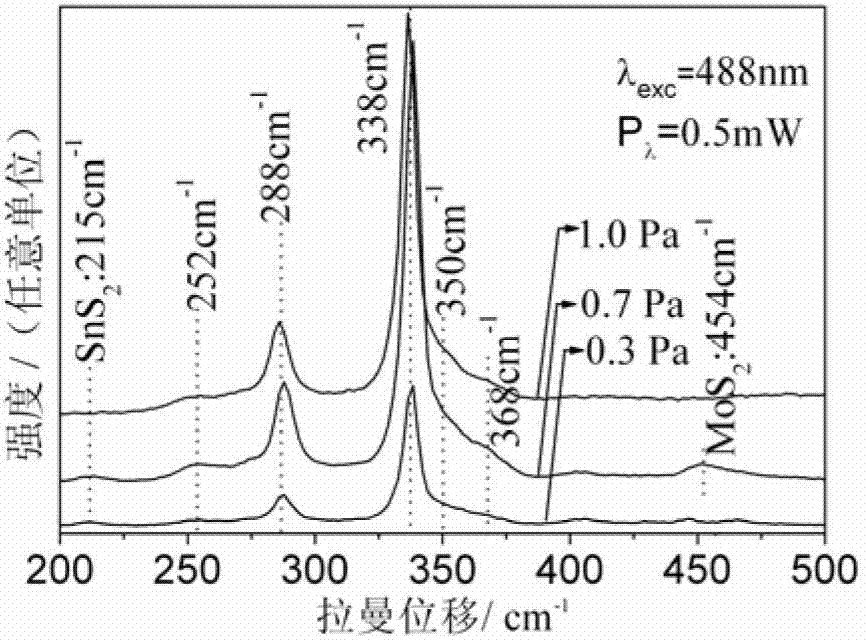Method of preparing copper-zinc tin-sulphur solar cell absorbed layer thin film
A solar cell, copper-zinc-tin-sulfur technology, applied in coatings, circuits, electrical components, etc., can solve the problems of high equipment requirements and cumbersome stack sputtering process, and achieve good repeatability, easy operation, and controllability strong effect
- Summary
- Abstract
- Description
- Claims
- Application Information
AI Technical Summary
Problems solved by technology
Method used
Image
Examples
Embodiment 1
[0027] 1) Substrate preparation: Soak the molybdenum-coated soda-lime glass substrate (SLG) in acetone, alcohol, deionized water in sequence, clean it ultrasonically, and dry it with nitrogen gas for later use;
[0028] 2) Preparation of CuZnSn metal precursor thin film: a DC magnetron sputtering system was used, and Cu-Zn-Sn alloy with a size of 50×4mm was used as a target for single-target sputtering, and the vacuum degree was 3.5×10 -4 More than Pa, the initiation argon gas flow rate is 45sccm, the initiation pressure is 1.2Pa, the sputtering power is 30W, the working pressure is 1.0Pa, and the sputtering time is 50min, and the thickness obtained on the surface of the above-mentioned molybdenum-coated soda-lime glass substrate is 600nm uniform and dense CuZnSn metal precursor film;
[0029] 3) Vacuum vulcanization of CuZnSn metal precursor thin film: Put the molybdenum-coated soda-lime glass substrate with CuZnSn metal precursor thin film sputtered on the surface and approp...
Embodiment 2
[0031] Embodiments 2-3: basically the same as Embodiment 1, only the working air pressure is different, the working air pressure of Embodiment 2 is 0.7Pa, and the working air pressure of Embodiment 3 is 0.3Pa.
Embodiment 4
[0032] Examples 4-5: are basically the same as Example 1, only the sputtering power is different, the sputtering power of Example 4 is 20W, and the sputtering power of Example 5 is 50W.
PUM
| Property | Measurement | Unit |
|---|---|---|
| thickness | aaaaa | aaaaa |
| particle size | aaaaa | aaaaa |
Abstract
Description
Claims
Application Information
 Login to View More
Login to View More - R&D
- Intellectual Property
- Life Sciences
- Materials
- Tech Scout
- Unparalleled Data Quality
- Higher Quality Content
- 60% Fewer Hallucinations
Browse by: Latest US Patents, China's latest patents, Technical Efficacy Thesaurus, Application Domain, Technology Topic, Popular Technical Reports.
© 2025 PatSnap. All rights reserved.Legal|Privacy policy|Modern Slavery Act Transparency Statement|Sitemap|About US| Contact US: help@patsnap.com



